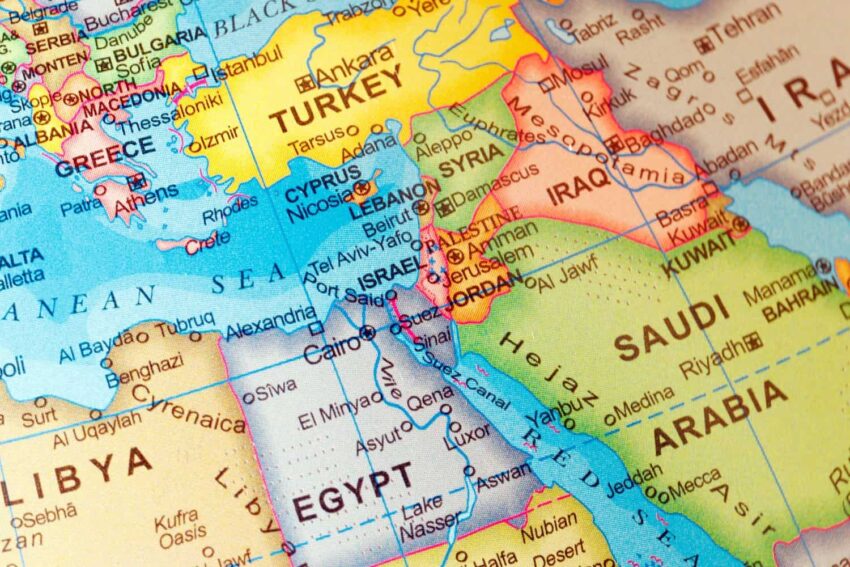Key Points
-
Out of all the Middle Eastern nations, perhaps the strongest economy in the region is that Turkey in its Purchasing Power Parity (PPP)
-
Turkey can buy more military materiel than any other nation in the region with an estimated PPP of $2.9 trillion
-
This figure outpaces other military leaders of the Middle East like Egypt and Iran
- Are you ahead, or behind on retirement? SmartAsset’s free tool can match you with a financial advisor in minutes to help you answer that today. Each advisor has been carefully vetted, and must act in your best interests. Don’t waste another minute; get started by clicking here.(Sponsor)
With the dust settling in the Middle East following the Israel-Iran conflict, its important to take into account how these nations measure up now because peace doesn’t always last long in this region. Out of all these nations, perhaps the strongest economy in the region is that Turkey in its Purchasing Power Parity (PPP). Basically, Turkey can buy more military materiel than any other nation in the region with an estimated PPP of $2.9 trillion. This figure outpaces other military leaders of the Middle East like Egypt and Iran. However, in light of the Middle East’s most recent conflict, it is surprising how Israel and Iran compare on this metric. Here, 24/7 Wall St. is taking a closer look at the Middle Eastern nations and how their purchasing power measures up.
To determine the Middle Eastern countries with the most PPP, 24/7 Wall St. reviewed the 2025 Military Strength Ranking from Global Firepower, an annually updated defense-related statistics website with information on 145 countries. Global Firepower ranked 145 countries based on their PowerIndex, a composite of over 60 measures in categories such as military might, financials, logistical capability, and geography. The smaller the PowerIndex value the more powerful a nation’s theoretical conventional fighting capability is. We ranked these countries based on PPP. We also included supplemental information regarding foreign exchange/gold reserves, defense budgets, external debt, a composition of military assets, as well as the overall military strength score.
Here is a look at the military powers with the most PPP in the Middle East:
Why Are We Covering This?
Understanding the military dynamics in the Middle East is essential given the region’s historical and ongoing geopolitical tensions. For decades, the Middle East has been shaped by conflicts, religious divisions, and territorial disputes, making it a hotspot for conflict. Whether it’s Iran’s growing influence or the strategic role of countries like Saudi Arabia and Israel, the military forces in this region heavily influence global security and energy markets.
17. Afghanistan
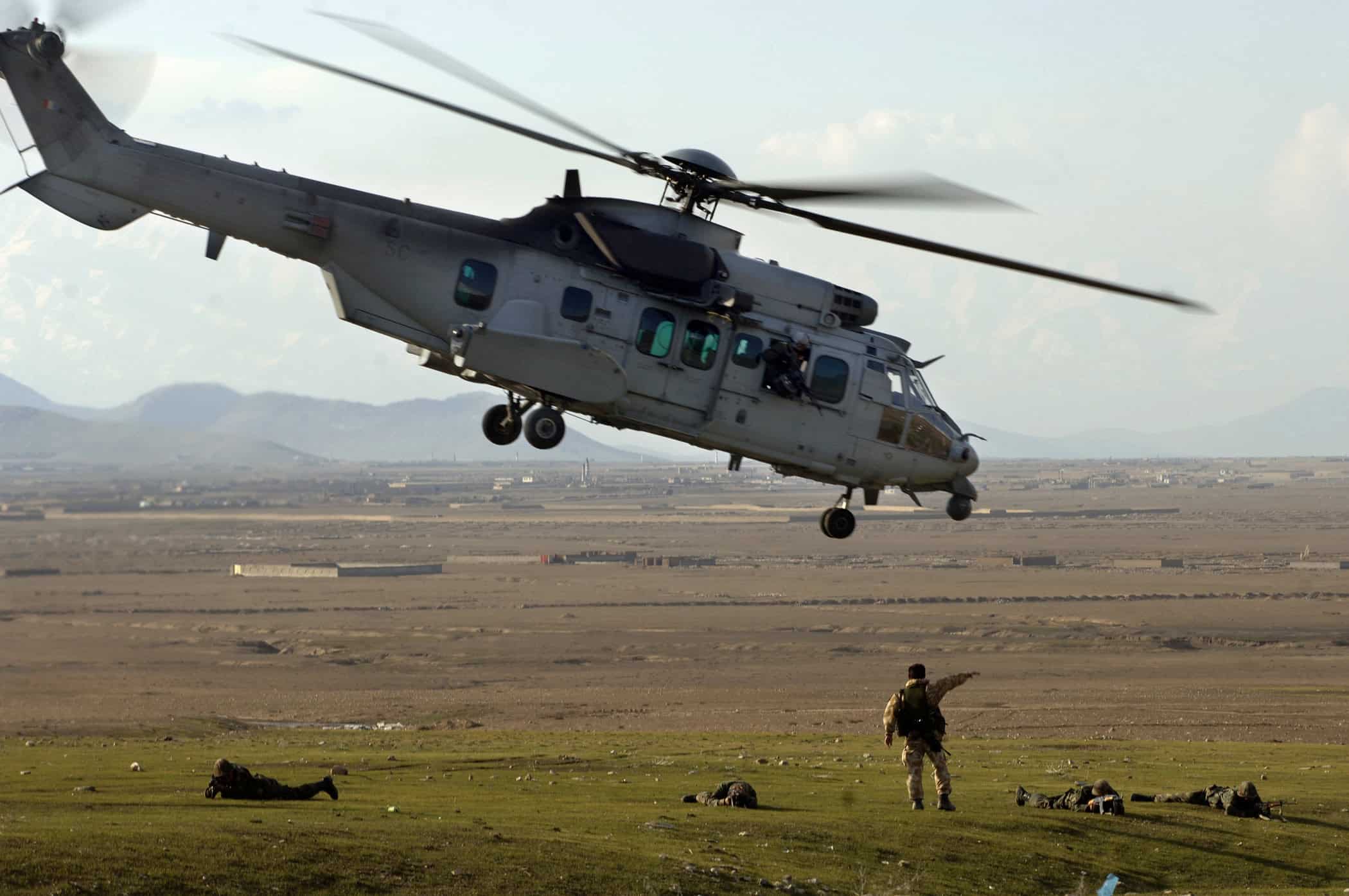
- Purchasing power parity: $54,772,700,000
- Foreign exchange and gold reserves: $8,852,092,000
- Military defense budget: $290,000,000 – #125 out of 145
- External debt: $1,142,500,000
- Total military aircraft: 9
- Total military vehicles: 5,202
- Total naval vessels: 0
- Military strength score and world rank: 2.6442 – #118 out of 145
For some background, Afghanistan has a total population of 40.12 million, and of these 8,826,741 are fit for military service. It has 80,000 total military personnel, which is composed entirely of paramilitary forces.
Afghanistan has long been called the “Graveyard of Empires,” having resisted invasions dating back to Alexander the Great and even on to the Mongols. While foreign powers have taken the country, none have held it for long. This proved true even in the 20th century, as Afghanistan was a hotspot during the Cold War. The Soviet invasion in 1979 sparked a decade-long war, followed by civil unrest and the rise of the Taliban. The U.S. occupation decades later would follow a similar path with a chaotic exit, ultimately returning the country to Taliban control.
16. Syria
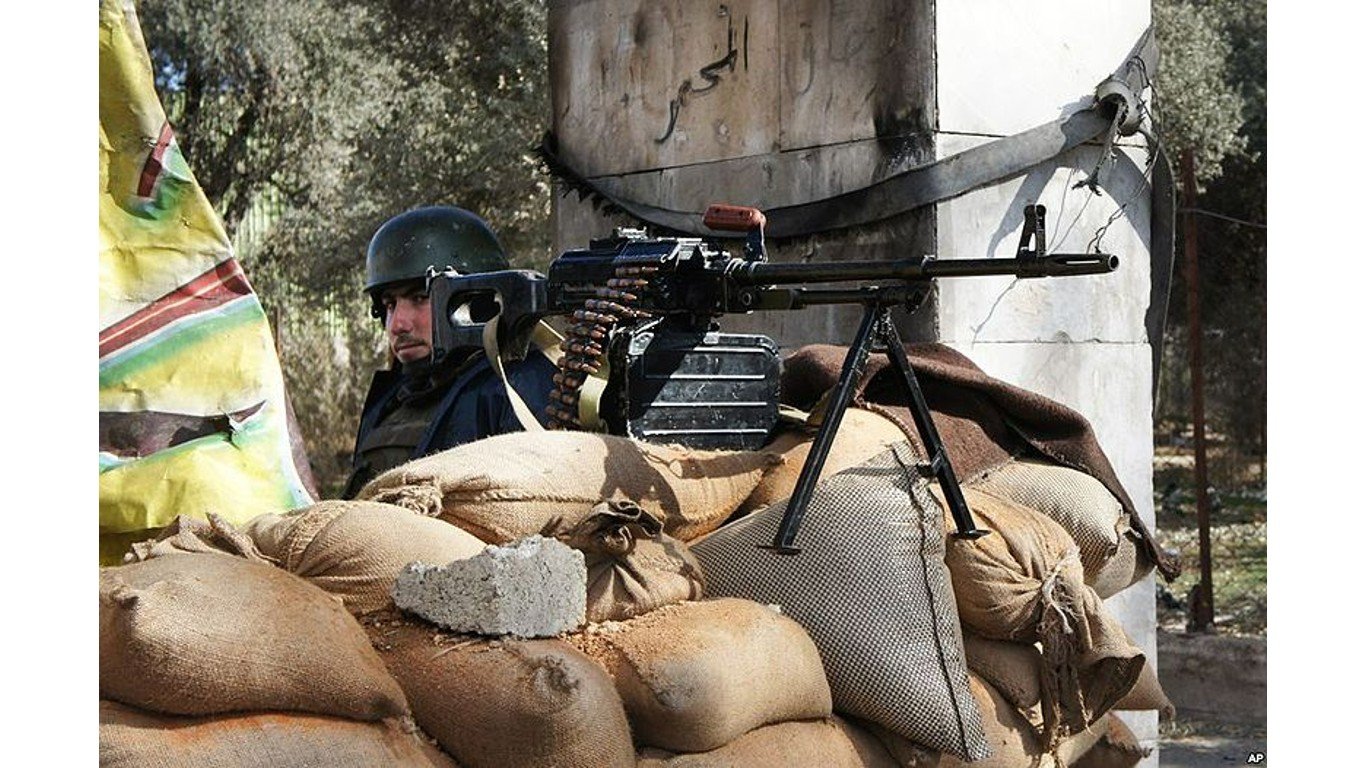
- Purchasing power parity: $55,935,900,000
- Foreign exchange and gold reserves: $341,962,500
- Military defense budget: $291,850,000 – #124 out of 145
- External debt: $4,309,500,000
- Total military aircraft: 207
- Total military vehicles: 11,148
- Total naval vessels: 27
- Military strength score and world rank: 1.2771 – #64 out of 145
For some background, Syria has a total population of 23.87 million, and of these 13,245,310 are fit for military service. It has 270,000 total military personnel, which is composed of 170,000 active personnel, 50,000 reserves, and 50,000 paramilitary forces.
Shaped largely by its strategic location bridging the Mediterranean and the Arab world, Syria has been a focal point of empires and modern conflicts alike down through the ages. After gaining independence from France in 1946, Syria became involved in multiple wars with Israel and played a role in the Lebanese Civil War. Its most defining recent conflict began in 2011 with the Syrian Civil War, sparked by Arab Spring protests.
15. Lebanon
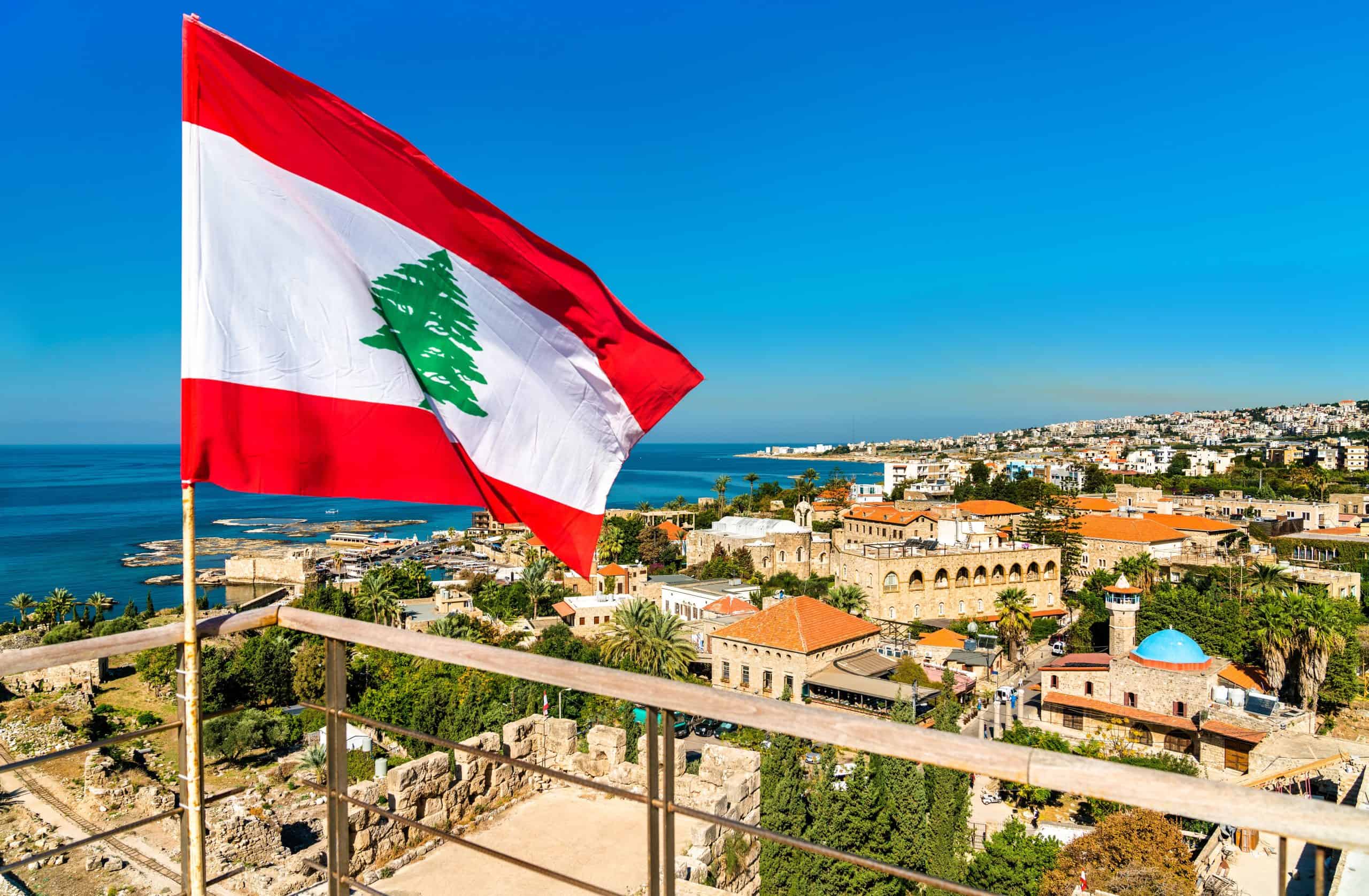
- Purchasing power parity: $65,818,000,000
- Foreign exchange and gold reserves: $26,498,095,000
- Military defense budget: $768,250,325 – #97 out of 145
- External debt: $36,928,000,000
- Total military aircraft: 80
- Total military vehicles: 4,538
- Total naval vessels: 64
- Military strength score and world rank: 2.5981 – #115 out of 145
For some background, Lebanon has a total population of 5.364 million, and of these 1,775,644 are fit for military service. It has 160,000 total military personnel, which is composed of 60,000 active personnel, 35,000 reserves, and 65,000 paramilitary forces.
Located on the Mediterranean, Lebanon has found itself at the center of numerous regional conflicts. Since gaining its independence from France in 1943, the country’s makeup of religious and ethnic groups has posed some internal challenges. The Lebanese Civil War, beginning in 1975, drew in multiple factions and foreign powers. In the years since, Lebanon’s military has focused on rebuilding and modernization. Even though it is a relatively small country, Lebanon plays an important role in maintaining regional security, managing tensions with non-state actors like Hezbollah, and addressing ongoing border issues with Israel.
14. Yemen
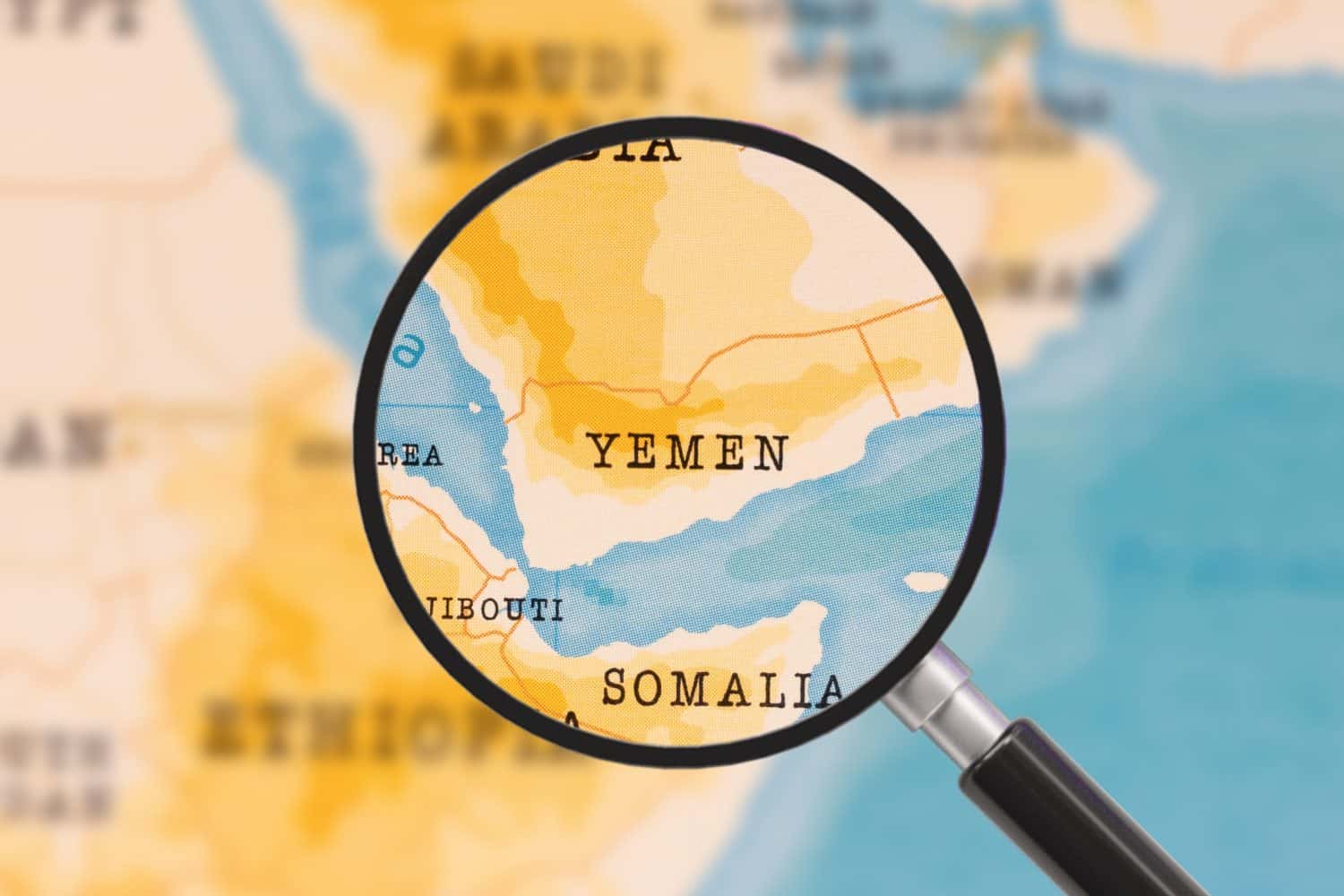
- Purchasing power parity: $67,003,300,000
- Foreign exchange and gold reserves: $923,361,750
- Military defense budget: $810,375,000 – #94 out of 145
- External debt: $6,343,500,000
- Total military aircraft: 84
- Total military vehicles: 550
- Total naval vessels: 33
- Military strength score and world rank: 1.8901 – #85 out of 145
For some background, Yemen has a total population of 32.14 million, and of these 9,031,464 are fit for military service. It has 86,700 total military personnel, which is composed of 66,700 active personnel and 20,000 paramilitary forces.
Yemen is currently a warzone. The country has been in a civil war since 2014, while this conflict is fairly complex in terms of the breakdown, there is a religious aspect that simplifies it along Sunni and Shia lines. Also, countries like Saudi Arabia and Iran have been involving themselves in providing weapons or aid to the opposing factions.
13. Bahrain
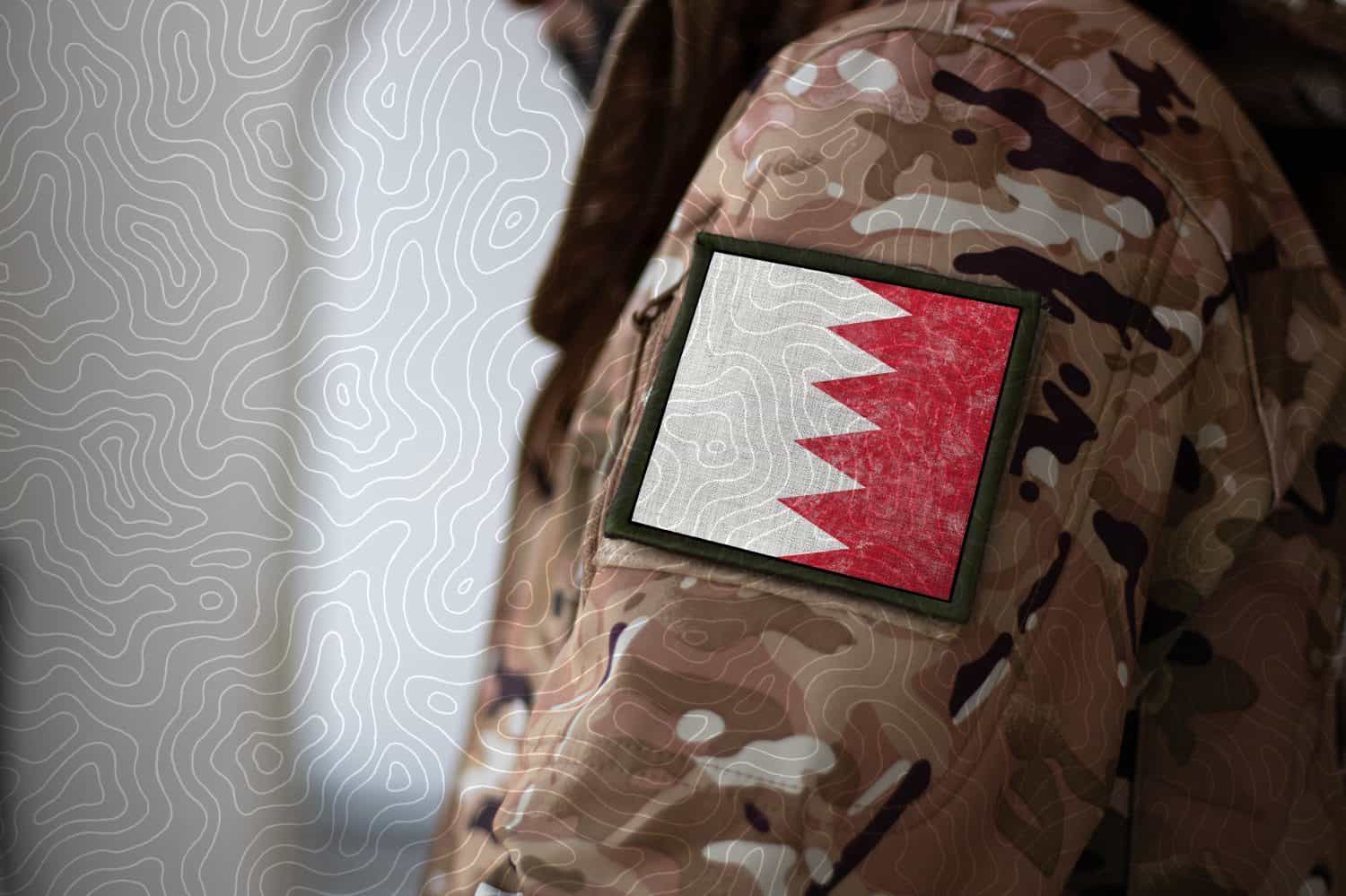
- Purchasing power parity: $85,491,000,000
- Foreign exchange and gold reserves: $5,118,000,000
- Military defense budget: $1,597,200,000 – #75 out of 145
- External debt: $49,500,000,000
- Total military aircraft: 132
- Total military vehicles: 2,764
- Total naval vessels: 64
- Military strength score and world rank: 1.7448 – #81 out of 145
For some background, Bahrain has a total population of 1.567 million, and of these 720,768 are fit for military service. It has 129,900 total military personnel, which is composed of 18,400 active personnel, 110,000 reserves, and 1,500 paramilitary forces.
Bahrain may be one of the smaller Middle Eastern nations, but its strategic location in the Persian Gulf has given it outsized importance. Historically, this island nation was occupied by the Portuguese in the 16th century, then came under Persian and Ottoman influence before becoming a British protectorate in the 19th century. Gaining independence in 1971, Bahrain established its own military and defense forces, steadily building its capabilities. Its long-standing ties with Western powers, particularly the U.S. and U.K., have helped modernize its forces, especially its navy.
12. Jordan
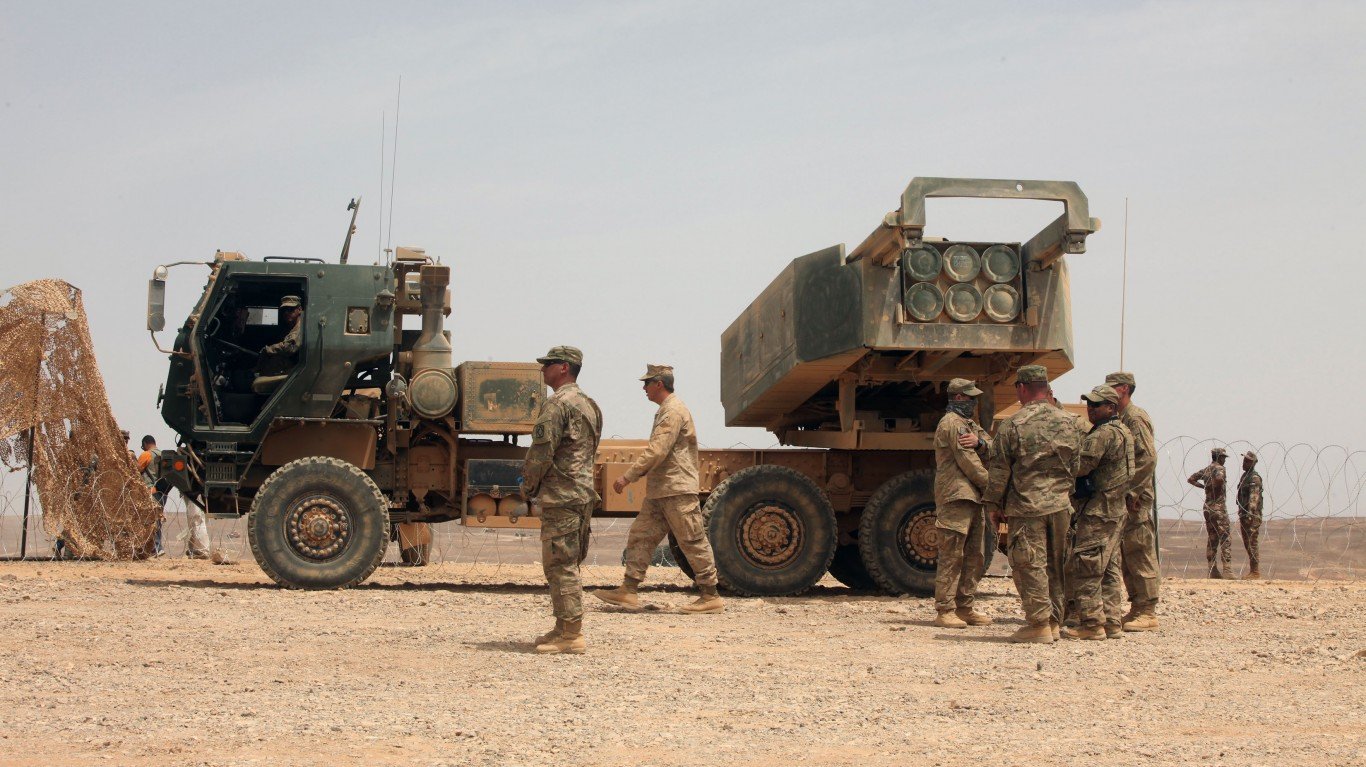
- Purchasing power parity: $106,806,000,000
- Foreign exchange and gold reserves: $15,715,600,000
- Military defense budget: $2,500,000,000 – #65 out of 145
- External debt: $25,646,500,000
- Total military aircraft: 274
- Total military vehicles: 16,624
- Total naval vessels: 27
- Military strength score and world rank: 1.6139 – #76 out of 145
For some background, Jordan has a total population of 11.17 million, and of these 2,983,464 are fit for military service. It has 200,500 total military personnel, which is composed of 100,500 active personnel, 65,000 reserves, and 35,000 paramilitary forces.
Jordan, like many other of these Middle Eastern nations, has a rich military history. The Hashemite Kingdom was formed after World War I from the remnants of the Ottoman Empire and gained full independence from Britain in 1946. Jordan fought in a few conflicts with Israel, including the 1948 Arab-Israeli War and the 1967 Six-Day War, where it lost the West Bank. These wars would define its modern borders and military posture. Today, Jordan maintains strong ties with Western powers, supports military modernization, and plays a stabilizing role in the region, having served as a mediator in peace talks.
11. Oman
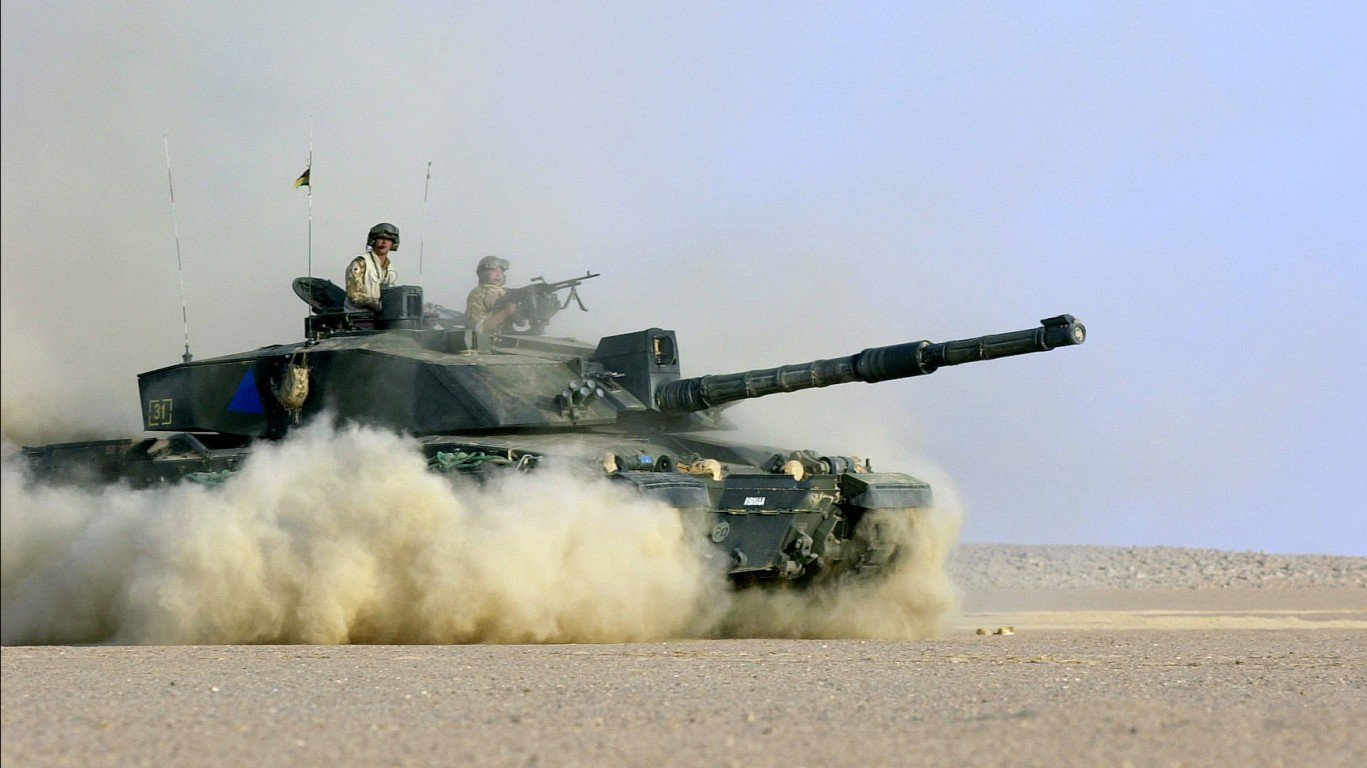
- Purchasing power parity: $185,960,000,000
- Foreign exchange and gold reserves: $17,455,000,000
- Military defense budget: $8,200,000,000 – #36 out of 145
- External debt: $50,897,000,000
- Total military aircraft: 128
- Total military vehicles: 4,084
- Total naval vessels: 22
- Military strength score and world rank: 1.8047 – #82 out of 145
For some background, Oman has a total population of 3.902 million, and of these 1,291,559 are fit for military service. It has 152,600 total military personnel, which is composed of 42,600 active personnel, 100,000 reserves, and 10,000 paramilitary forces.
Oman was a formidable empire in the 17th and 18th centuries, with naval strength and colonies across the Indian Ocean that allowed it to push back against Portuguese and Persian influence. Its military capabilities advanced significantly in the 19th century through an alliance with the British Empire, which helped modernize its forces as well. In recent decades, Oman has largely stayed neutral in regional conflicts, choosing instead to prioritize national defense.
10. Kuwait
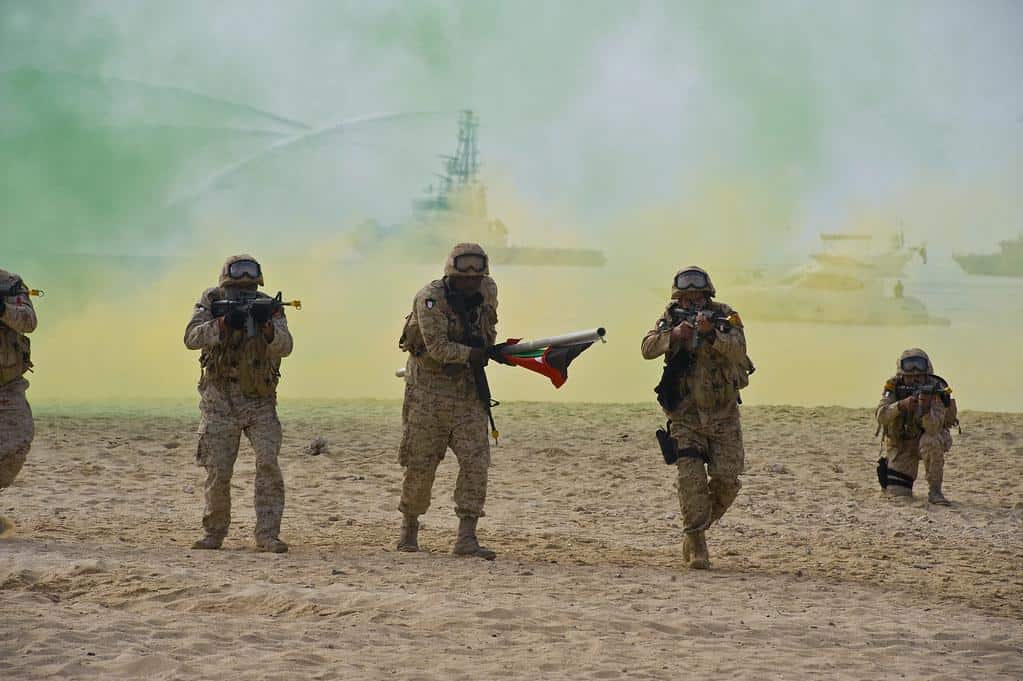
- Purchasing power parity: $219,060,000,000
- Foreign exchange and gold reserves: $52,619,000,000
- Military defense budget: $6,950,000,000 – #41 out of 145
- External debt: $55,000,000,000
- Total military aircraft: 128
- Total military vehicles: 5,636
- Total naval vessels: 123
- Military strength score and world rank: 1.6982 – #79 out of 145
For some background, Kuwait has a total population of 3.138 million, and of these 1,449,920 are fit for military service. It has 103,500 total military personnel, which is composed of 72,000 active personnel, 24,000 reserves, and 7,500 paramilitary forces.
Kuwait’s strategic location at the northern edge of the Persian Gulf has long shaped its military history. This nation was once under Ottoman rule, but it became a British protectorate before gaining independence in 1961. The most defining chapter came in 1990, when Iraq invaded Kuwait over oil disputes and debt, leading to the Gulf War. An international coalition intervened to liberate the country. The invasion showed Kuwait’s vulnerability and reinforced its need for strong defense partnerships, particularly with Western allies.
9. Qatar

- Purchasing power parity: $304,973,000,000
- Foreign exchange and gold reserves: $51,539,000,000
- Military defense budget: $9,432,000,000 – #34 out of 145
- External debt: $187,000,000,000
- Total military aircraft: 251
- Total military vehicles: 5,024
- Total naval vessels: 115
- Military strength score and world rank: 1.4307 – #72 out of 145
For some background, Qatar has a total population of 2.552 million, and of these 490,001 are fit for military service. It has 87,050 total military personnel, which is composed of 66,550 active personnel, 15,000 reserves, and 5,500 paramilitary forces.
Located on the Arabian Peninsula, Qatar maintains vast natural gas and oil reserves. Since gaining independence from Britain in 1971, Qatar has rapidly modernized its armed forces, fueled by its rising economic power from energy exports. Like other nations in the region, Qatar has acquired advanced military technology from Western powers. Qatar is also particularly focused on building up its naval capabilities to defend its coastline and safeguard its energy infrastructure.
8. Israel
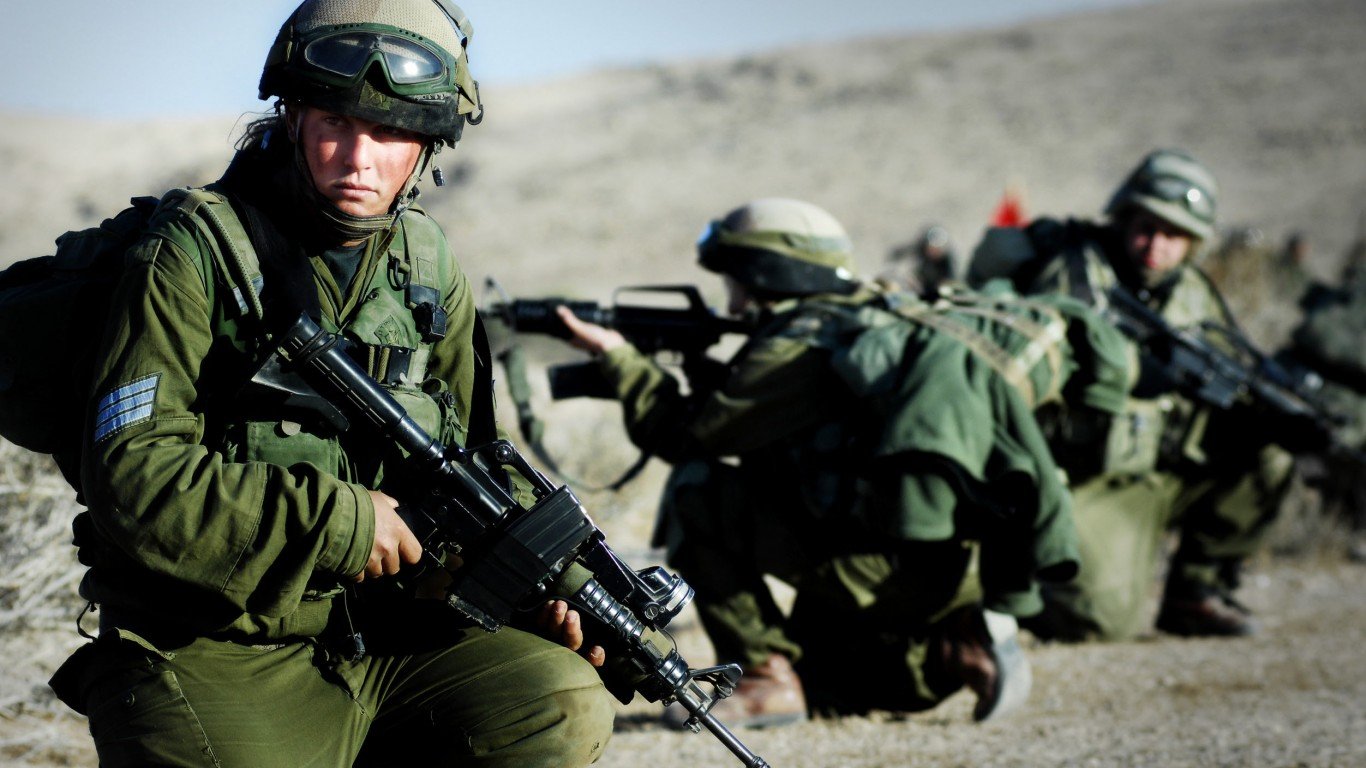
- Purchasing power parity: $471,030,000,000
- Foreign exchange and gold reserves: $204,661,000,000
- Military defense budget: $30,500,000,000 – #17 out of 145
- External debt: $148,500,000,000
- Total military aircraft: 611
- Total military vehicles: 35,985
- Total naval vessels: 62
- Military strength score and world rank: 0.2661 – #15 out of 145
For some background, Israel has a total population of 9.403 million, and of these 3,281,513 are fit for military service. It has 670,000 total military personnel, which is composed of 170,000 active personnel, 465,000 reserves, and 35,000 paramilitary forces.
Israel’s military history is central to its national identity, reinforced by compulsory service for most citizens. Founded in 1948, Israel was immediately thrust into war with neighboring Arab states. Since then, it has remained at the heart of regional conflict, even continuing to this day. Key wars include the Suez Crisis, Six-Day War, and Yom Kippur War, along with repeated clashes in Lebanon. In many of these, Israel not only survived but expanded its territory. Its most recent conflict with Iran has raised more questions than it has answered, and the fallout of this is still yet to be seen in its entirety.
7. Iraq

- Purchasing power parity: $572,939,000,000
- Foreign exchange and gold reserves: $112,233,000,000
- Military defense budget: $7,923,000,000 – #37 out of 145
- External debt: $45,032,500,000
- Total military aircraft: 391
- Total military vehicles: 37,288
- Total naval vessels: 68
- Military strength score and world rank: 0.7738 – #43 out of 145
For some background, Iraq has a total population of 42.08 million, and of these 14,308,368 are fit for military service. It has 293,000 total military personnel, which is composed of 193,000 active personnel and 100,000 paramilitary forces.
Iraq gained independence from Britain in 1932 but remained under its influence until the late 1950s. Saddam Hussein came to power in 1979 under the Ba’ath Party, further expanding the Iraqi military and launching the Iran-Iraq War just a year later.. His 1990 invasion of Kuwait instigated the Gulf War, and later a U.S.-led invasion in 2003 ultimately leading to his demise. Currently, Iraq is focused on rebuilding its military while addressing ongoing internal security challenges.
6. United Arab Emirates
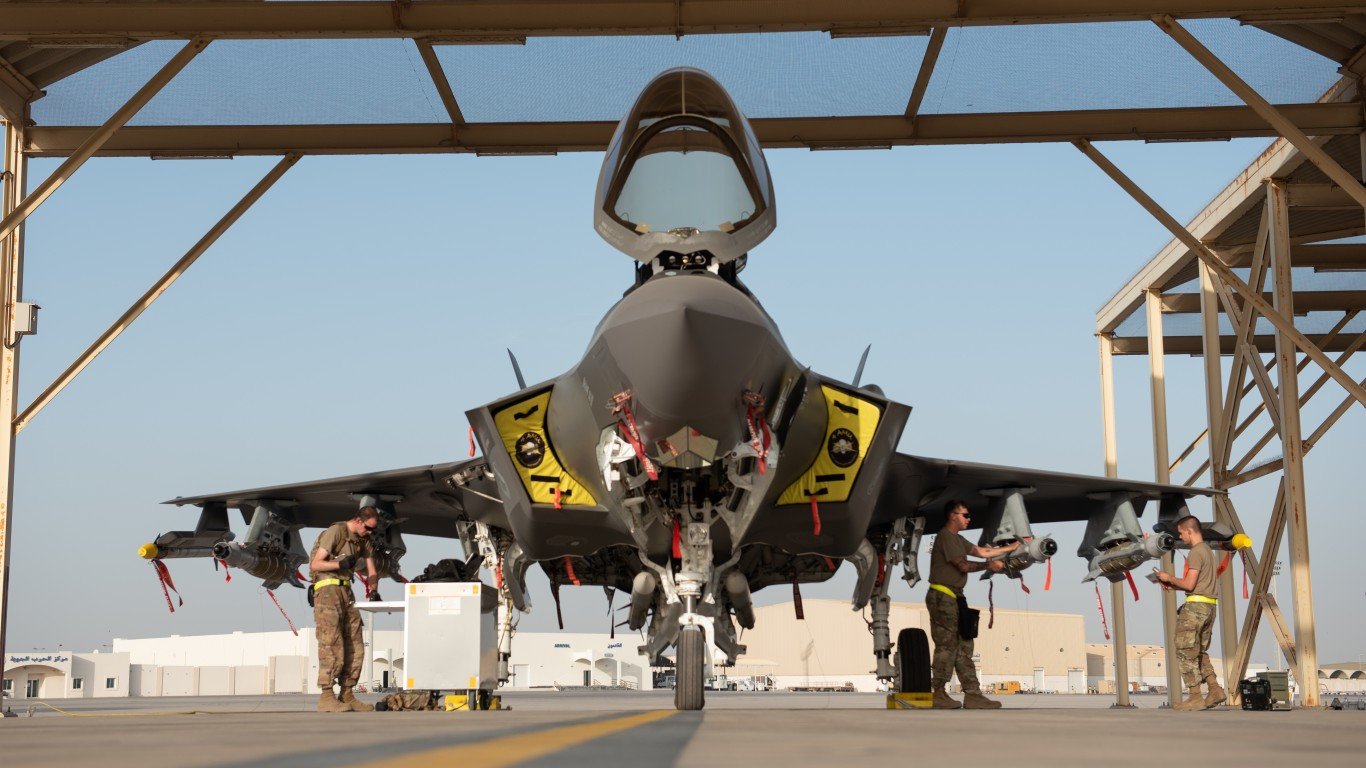
- Purchasing power parity: $719,733,000,000
- Foreign exchange and gold reserves: $189,491,000,000
- Military defense budget: $2,212,360,382 – #70 out of 145
- External debt: $264,000,000,000
- Total military aircraft: 551
- Total military vehicles: 8,707
- Total naval vessels: 181
- Military strength score and world rank: 1.0186 – #54 out of 145
For some background, United Arab Emirates has a total population of 10.03 million, and of these 4,945,881 are fit for military service. It has 207,000 total military personnel, which is composed of 65,000 active personnel, 130,000 reserves, and 12,000 paramilitary forces.
The United Arab Emirates (UAE) has a relatively young but dynamic military history. Formed in 1971 through the union of seven emirates, the country prioritized building a modern military. With weaponry largely supplied by the U.S. and France, the UAE has taken part in operations in the Gulf War, Yemen, and against ISIS. Despite its small size, the UAE has established military bases in the Horn of Africa and other strategic regions
5. Pakistan
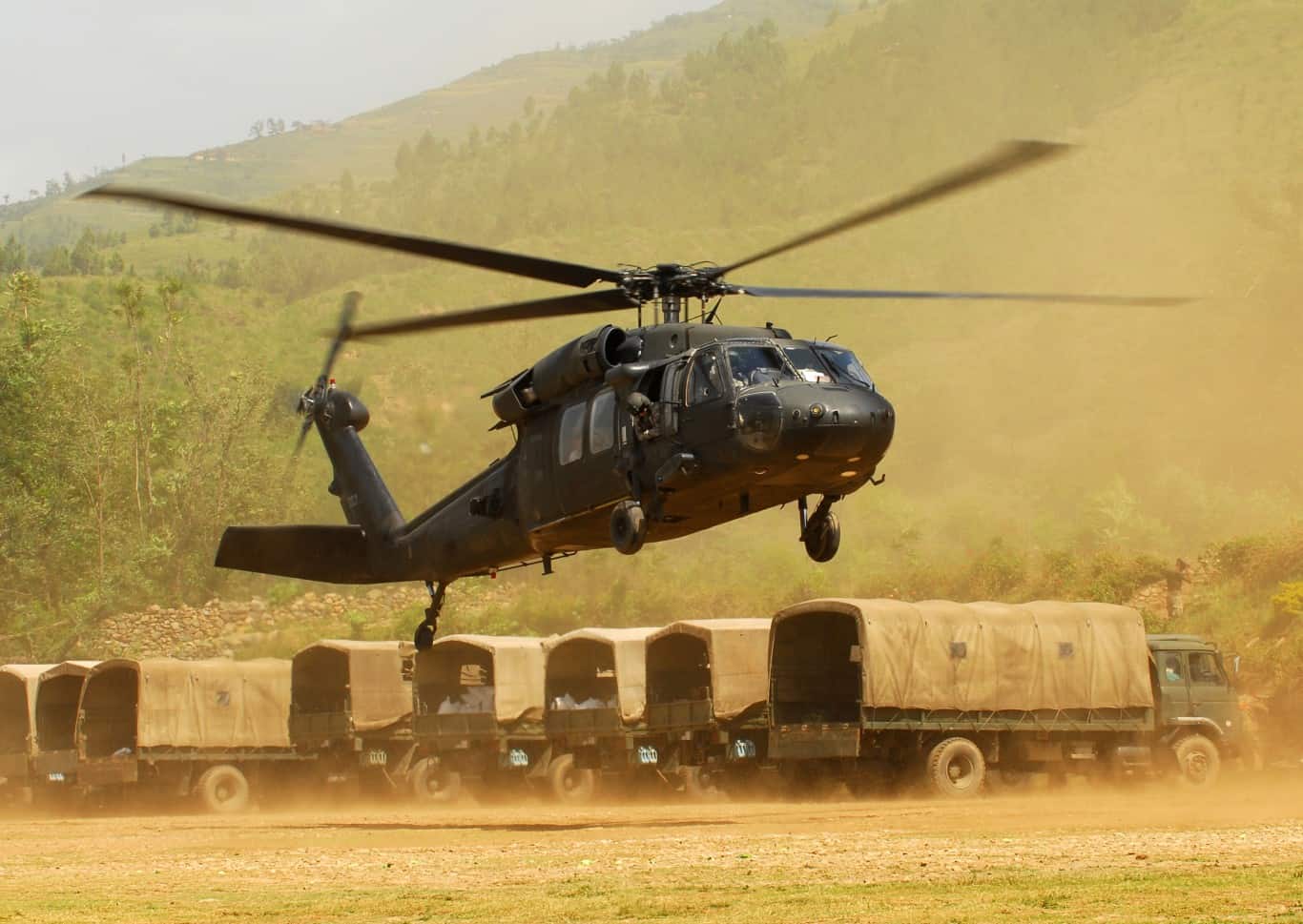
- Purchasing power parity: $1,347,000,000,000
- Foreign exchange and gold reserves: $13,730,000,000
- Military defense budget: $7,640,000,000 – #38 out of 145
- External debt: $92,426,000,000
- Total military aircraft: 1,399
- Total military vehicles: 17,516
- Total naval vessels: 121
- Military strength score and world rank: 0.2513 – #12 out of 145
For some background, Pakistan has a total population of 252.36 million, and of these 85,803,614 are fit for military service. It has 1,704,000 total military personnel, which is composed of 654,000 active personnel, 550,000 reserves, and 500,000 paramilitary forces.
Pakistan’s military history began with its formation in 1947, following its separation from India. This division would continue to be the source for animosity even in contemporary times. The first Indo-Pakistani War was fought over Kashmir, with more wars following in 1965 and 1971. The 1971 war ended in a major defeat for Pakistan and led to the creation of Bangladesh. Pakistan also played a role in the Soviet-Afghan War, supporting mujahideen fighters with U.S. and Saudi backing. Today, Pakistan maintains one of the world’s top 10 most powerful militaries.
4. Iran
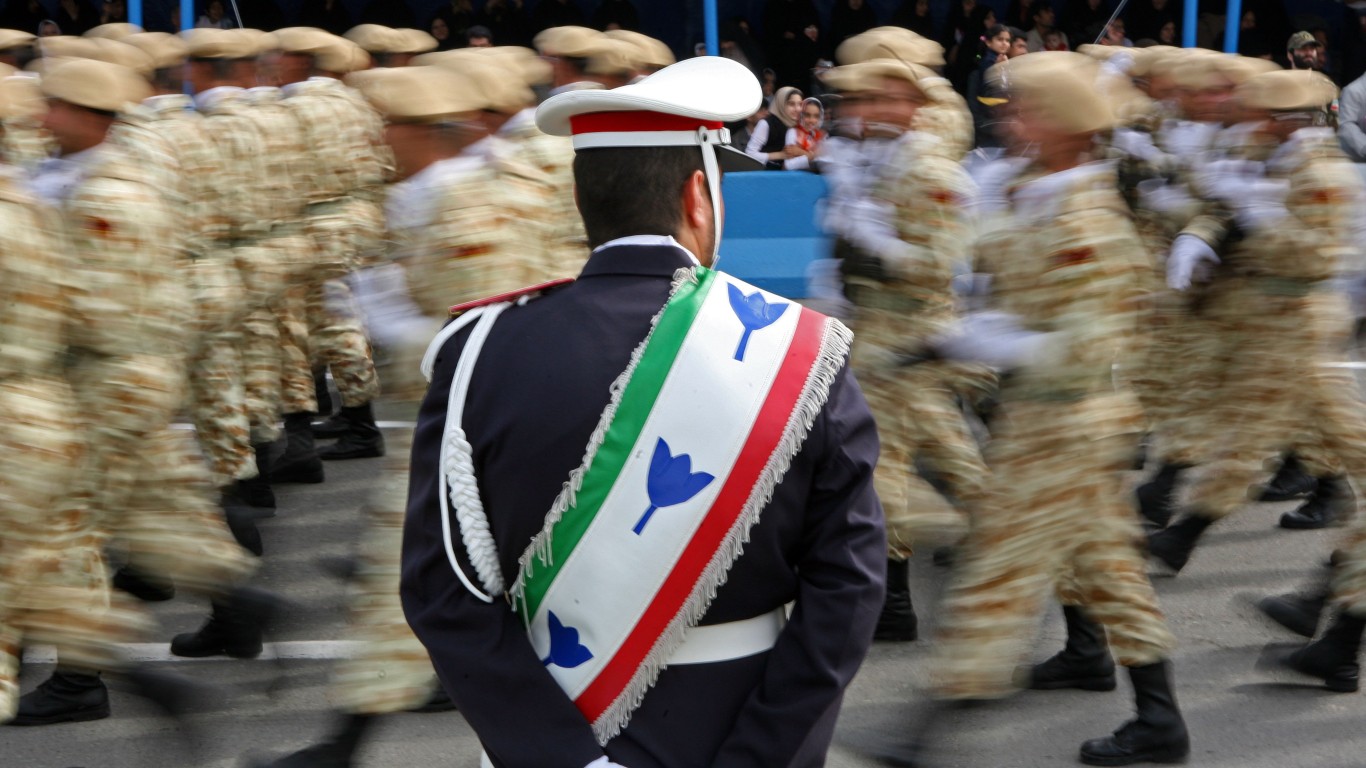
- Purchasing power parity: $1,440,000,000,000
- Foreign exchange and gold reserves: $120,600,000,000
- Military defense budget: $15,450,000,000 – #25 out of 145
- External debt: $4,134,926,000
- Total military aircraft: 551
- Total military vehicles: 65,825
- Total naval vessels: 107
- Military strength score and world rank: 0.3048 – #16 out of 145
For some background, Iran has a total population of 88.39 million, and of these 41,541,860 are fit for military service. It has 1,180,000 total military personnel, which is composed of 610,000 active personnel, 350,000 reserves, and 220,000 paramilitary forces.
Iran’s military roots stretch back to the ancient Persian Empire, giving it a long and rich history. Today, it’s viewed by many Western powers as a regional antagonist, leading to sanctions that have hindered its military modernization. Despite these constraints, Iran maintains a formidable military with a seemingly endless supply of rockets and artillery. Iran’s recent conflict with Israel proved the resolve of its military and that it will not so easily be defeated.
3. Saudi Arabia
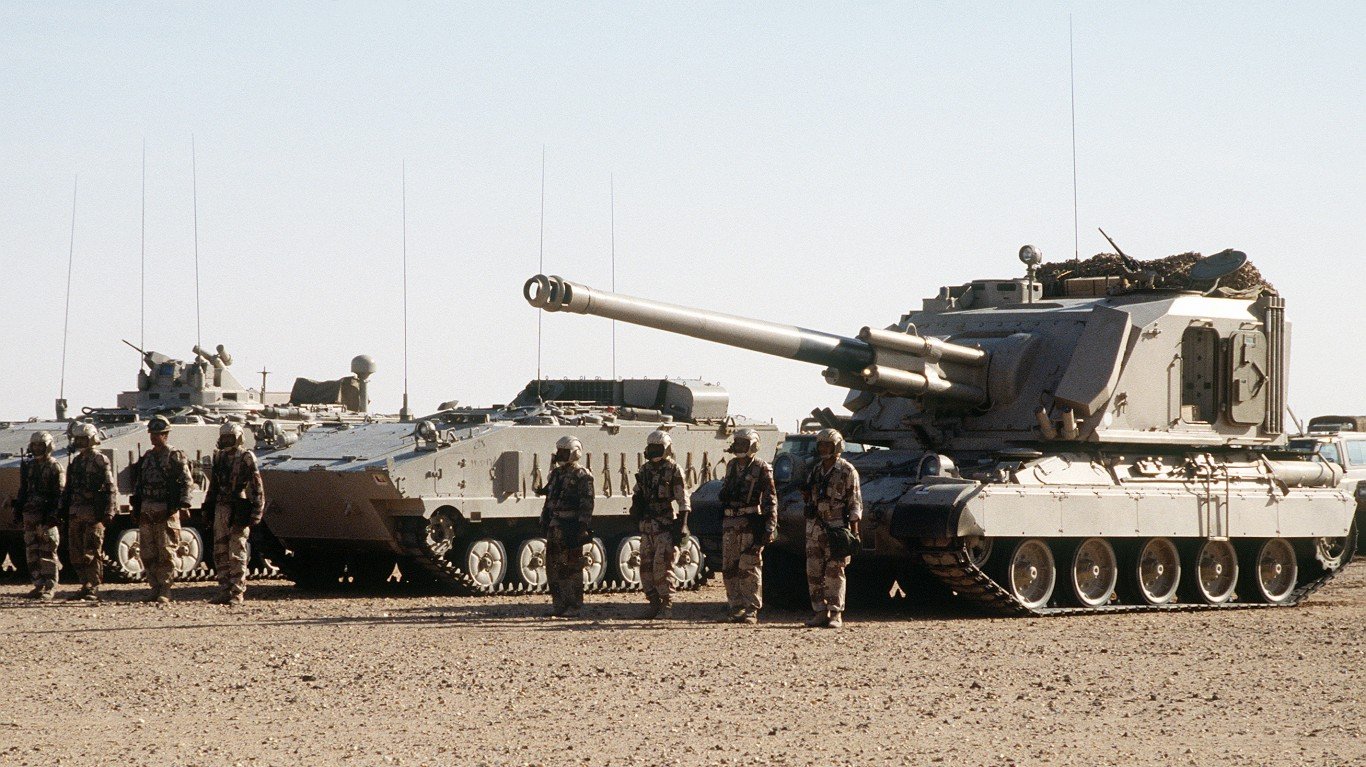
- Purchasing power parity: $1,831,000,000,000
- Foreign exchange and gold reserves: $457,949,000,000
- Military defense budget: $74,760,000,000 – #5 out of 145
- External debt: $225,610,000,000
- Total military aircraft: 917
- Total military vehicles: 19,040
- Total naval vessels: 32
- Military strength score and world rank: 0.4201 – #25 out of 145
For some background, Saudi Arabia has a total population of 36.54 million, and of these 17,468,238 are fit for military service. It has 407,000 total military personnel, which is composed of 257,000 active personnel and 150,000 paramilitary forces.
Saudi Arabia’s military history goes back centuries, but its modern state was officially founded in 1932 after Ibn Saud unified the region. The discovery of oil in the 1930s elevated the Kingdom’s global standing, especially with its lucrative trade with Western powers. This wealth enabled Saudi Arabia to acquire advanced weaponry and aircraft, solidifying its position as a dominant regional power. The country also played a key role in the Gulf War, joining the coalition to expel Iraqi forces from Kuwait.
2. Egypt

- Purchasing power parity: $1,912,000,000,000
- Foreign exchange and gold reserves: $33,070,000,000
- Military defense budget: $5,879,500,000 – #46 out of 145
- External debt: $103,750,000,000
- Total military aircraft: 1,093
- Total military vehicles: 41,012
- Total naval vessels: 150
- Military strength score and world rank: 0.3427 – #19 out of 145
For some background, Egypt has a total population of 111.25 million, and of these 38,269,053 are fit for military service. It has 1,220,000 total military personnel, which is composed of 440,000 active personnel, 480,000 reserves, and 300,000 paramilitary forces.
Egypt straddles the Middle East and Africa and controls the Suez Canal, a key shipping lane on the global stage. From the days of the Pharaohs to the present, Egypt has been a regional military power. However, more recently, its military relies less on swords and horses but instead on its massive arsenal of advanced aircraft and tanks.
1. Turkey
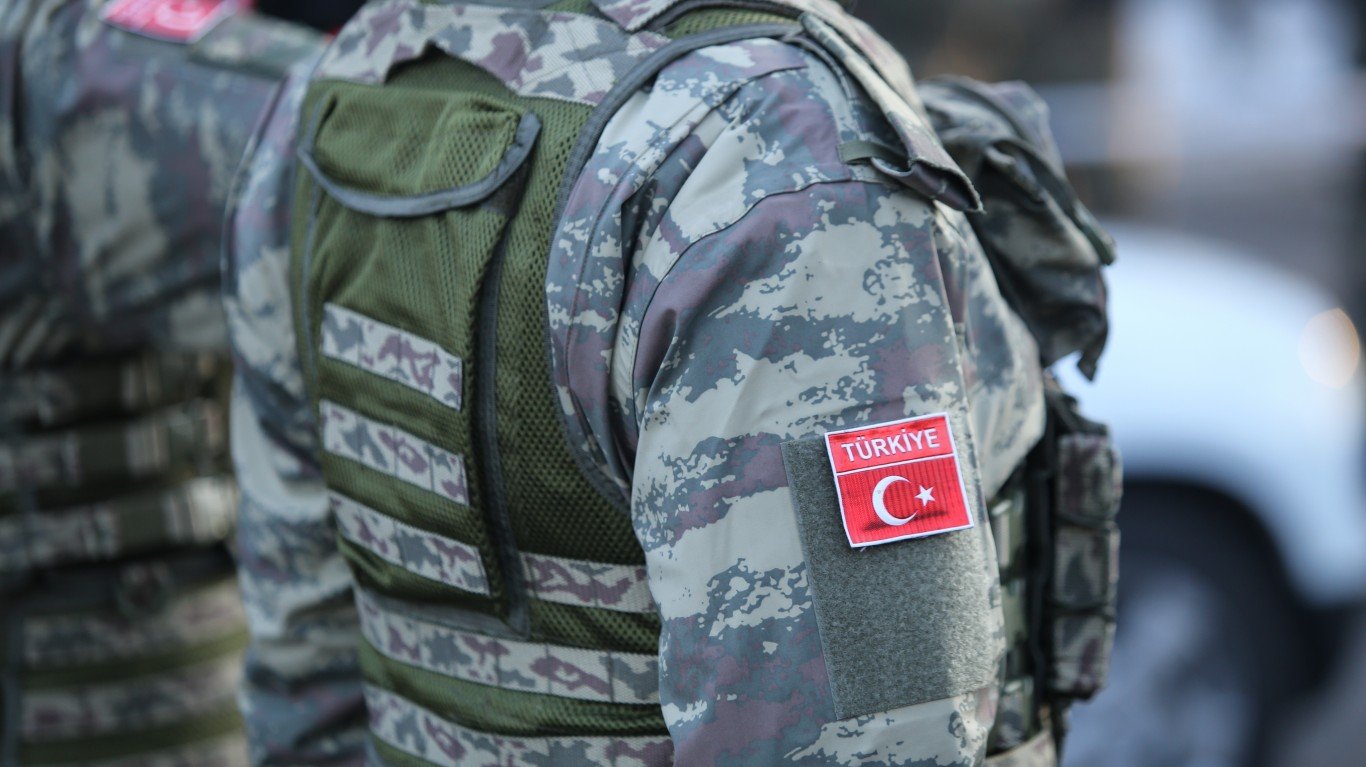
- Purchasing power parity: $2,936,000,000,000
- Foreign exchange and gold reserves: $140,858,000,000
- Military defense budget: $47,000,000,000 – #13 out of 145
- External debt: $294,441,000,000
- Total military aircraft: 1,083
- Total military vehicles: 61,173
- Total naval vessels: 182
- Military strength score and world rank: 0.1902 – #9 out of 145
For some background, Turkey has a total population of 84.12 million, and of these 36,087,279 are fit for military service. It has 883,900 total military personnel, which is composed of 355,200 active personnel, 378,700 reserves, and 150,000 paramilitary forces.
Turkey’s military history is deeply rooted in its legacy as the heart of the Ottoman Empire. Its strategic position between Europe and Asia has largely dictated the composition of its forces, and helped to secure its place in NATO. The fall of the Ottoman Empire after World War I and the Turkish War of Independence gave shape to the nation and its borders.
The post What Turkey’s $2.9 Trillion Economy Means for Middle East Power Dynamics appeared first on 24/7 Wall St..
Click this link for the original source of this article.
Author: Chris Lange
This content is courtesy of, and owned and copyrighted by, https://247wallst.com and its author. This content is made available by use of the public RSS feed offered by the host site and is used for educational purposes only. If you are the author or represent the host site and would like this content removed now and in the future, please contact USSANews.com using the email address in the Contact page found in the website menu.

